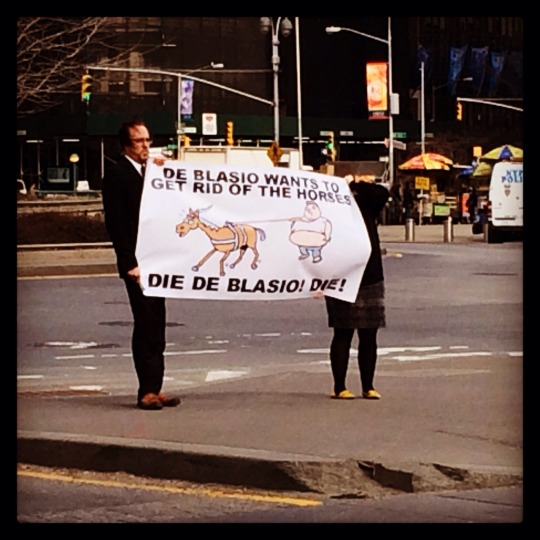Text
Chicago's Proposed Light Show and Photographers
Chicago Mayor Rahmn Emanuel has proposed lighting Chicago' riverfront and major buildings as a means of attracting tourists. According to the Chicago Tribune's architectural critic Blair Kamin, some proponent's of the proposal argue that lighting the city would make Chicago more photogenic.
I spend countless hours every week photographing Chicago’s architecture. No one who knows anything about photography would suggest that splashy lights make a city more photogenic.
I will be returning to Paris in July. I have one Eiffel Tower shot in my portfolio and it was the weather that made that an interesting photograph—not the light show. We all like to take the signature photograph when visiting a city, but inevitably the interesting photographs are the ones that focus on the details. A good case can be made that the best photographs are the ones where the location is unknown.
Brassai certainly didn’t need lights to make his photographs. More to the point, the Chicago Museum of Contemporary Art recently displayed a series of large format prints by Catherine Opie—Chicago (American Cities). All were taken at night using natural city light.
As for making Chicago more photogenic—begin by removing the visual clutter that the city indiscriminately puts everywhere. Case in point, the northeast corner of the Jeweler’s Building. The large clock outside Helmut Jahn’s office now has street lights blocking its face, resulting in a claustrophobic look. I don’t think the architect intended that when he put the clock there.
Another case in point. Try photographing the Michigan Avenue entrance to the Carbide & Carbon building. It has been defaced by the strategically misplaced street lights. Still another case in point, walk the streets lining the river. Signs and lamp posts are placed at the wrong heights so that they clutter views. Everywhere the city puts its crap up without thinking.
We will see how Navy Pier comes out after the work is completed, but for years it has been impossible to shoot landscapes looking back on the city from Navy Pier. The dock facing southwest is a visual mess, with the ugly tourist boats, concession stands, and banner poles. Let the view speak for itself.
My comments so far have assumed that city panoramas are what matter. Although they are fun to make and can be beautiful if the light or weather is interesting, they can quickly become boring when no thought is used to create them. At the end of the day, urban photography is about light and shadow, details, and those who inhabit the city. You don’t need to light the Willis Tower to get great photographs that capture Chicago and its people. Just take a look at the work of Harry Callahan or Vivian Meyer.
#Jack B. Siegel#Photography#Chicago#Architecture#Panoramas#Navy Pier#Jeweler's Building#Carbide & Carbon Building#Chicago River#Mayor Rahmn Emanuel#Selfie#Chicago Tribune#Paris#Effifel Tower
0 notes
Text
Metropolitan Museum of Art Attempts to Maintain Control Over the Use of Public Domain Art in Its Collection
DATELINE Chicago, June 5, 2014
The Metropolitan Museum of Art recently added 400,000 images to its online collection. According to the Met’s website:
The Metropolitan Museum of Art is committed to making a broad range of digital images of artworks in the public domain widely and freely available for scholarly and academic publication. … Through OASC, artworks in the Collection section of the website which the Museum believes to be in the public domain and free of other known restrictions have been identified by an icon, Open Access for Scholarly Content (OASC) Icon; images associated with these artworks can be downloaded for license- and cost-free scholarly and academic publication, according to the Terms and Conditions.
The Terms and Conditions page raises many more questions than it answers. If a work is labeled OASC, the file can be downloaded and used for the following specified purposes.:
Images of Works of Art that are in the Public Domain. Images of works of art that the Museum believes to be in the public domain which are identified as Open Access for Scholarly Content (OASC) Icon on the Site may be downloaded for limited non-commercial, educational, and personal use only, or for fair use as defined in the United States copyright laws. In addition, authorized non-commercial uses for such images shall include scholarly publications in any media. Users must, however, cite the author and source of such images, and the citations should include the URL "www.metmuseum.org," but not in any way that implies endorsement of the user or the user’s use of the images.
The Museum does not warrant that use of the Materials displayed on the Websites will not infringe the rights of third parties not owned by or affiliated with the Museum. For example, some works may be under copyright by the artist or the artist's heirs holding rights to these works.
In Circular 15a, the U.S. Copyright Office states:
Applying these standards, all works published in the United States before January 1, 1923, are in the public domain.
Using this as a shorthand rule, the problems in using the photographs in the Met’s online archives becomes readily apparent. The archives include Alfred Stieglitz’s From My Window at An American Place, Southwest. The print is dated 1932, but the Credit Line reads “Alfred Stieglitz Collection, 1949.” Notably, this photograph is not designated OASC. For that reason alone, anyone using this photograph (without further effort to clarify the copyright ownership) would be opening himself up to potential liability, but even if the photograph carried the OASC designation, the language in the Terms and Conditions regarding the rights of third parties explains why those wanting to use the photograph should exercise caution.
On the other hand, Stieglitz’s The Steerage indicates that it was “printed in or before 1913,” which would place the photograph in the public domain under the Copyright Office’s formulation. That fact probably explains why the work carries the OASC designation.
Use Is Limited. Under the Terms and Conditions:
The Materials are made available for limited non-commercial, educational, and personal use only, or for fair use as defined in the United States copyright laws. Users may download these files for their own use, subject to any additional terms or restrictions which may be applicable to the individual file or program.
So what constitutes non-commercial, educational, or personal use? Is posting to a photo blog permissible? Suppose the blog is part of a website where the photographer sells his own work? The FAQ accompanying the Terms and Conditions offers some insight:
May I put images or text from the Websites on my personal site?
Yes, for those images believed by the Museum to be in the public domain which are identified as Open Access for Scholarly Content (OASC) Icon on the Websites, but only if your site takes in no advertisements or sponsors, does not charge a fee for services, and does not offer any product or service for sale.
The site also contains a lengthy description of what constitutes scholarly publication. The FAQ (this is a different FAQ) states:
How can I determine whether my intended use is scholarly?
For the purposes of the Museum's license-free Open Access for Scholarly Content (OASC), authors, publishers, and other potential image users are encouraged to make their own determination as to whether their intended use is scholarly. Users must carefully review this website's Terms and Conditions prior to downloading or using images or any materials from this website. The Metropolitan Museum of Art does not warrant that all images designated for download as Open Access for Scholarly Content (OASC) are free from rights claimed by third parties; it is the user's responsibility to ensure that there are no restrictions based on third-party rights. The Museum assumes no liability for the user's use of these images if a third party makes an infringement claim.
Once again, the Met’s lawyers appear to be a little coy. It’s up to users to determine whether the use is scholarly. In one sense, this is smart drafting. It is impossible to anticipate every possible use, so this language encourages the cautious to ask. In another sense, the language is likely to result in disputes between the Met and those who are aggressive in making their own determination.
The Major Issue. A number of people have questioned whether the Met can assert a copyright interest in these images to the extent that they have entered the public domain. If it is asserting copyright in the images, it is claiming a copyright in its reproductions of the photographs rather than the underlying work. The law, however, is relatively clear: No copyright interest attaches to slavish reproductions of someone else’s otherwise copyrightable expressions. Meshwerks v. Toyota, 528 F.3d 1258 (10th Cir. 2008); Eastern America Trio Products v. Tang Electronic Corp, 54 USPQ2d 1776, 1791 (S.D.N.Y. 2000); and Bridgeman Art Library v. Corel Corp., 36 F. Supp. 2d 191 (S.D.N.Y. 1999). The problem that the Met faces, as have others, is that the entire point of its efforts is to reproduce as an exact copy of the underlying works as possible. The U.S. Supreme Court has held that it is the originality of the expression that counts, not the amount of work that goes into creating the image. Feist Publications, Inc., v. Rural Telephone Service Co., 499 U.S. 340 (1991). For a historical discussion, see Robin J. Allan, After Bridgeman: Copyright, Museums, and Public Domain Works of Art, 155 U. of Penn. L. Rev. 961 (2007). Where the Met may have more latitude is in the case of photographs that it has made of three-dimensional objects. At the end of the day, I have serious doubts whether the Met would prevail if it brought a lawsuit based solely on copyright infringement as a means of protecting its reproductions of two-dimensional works that have entered the public domain.
But that is not the end of the analysis. The Terms and Conditions begins with the following statement:
By accessing the Websites, users agree to be bound by the following terms and conditions, which the Museum may revise at any time. Users are encouraged to visit this page from time to time to review current terms and conditions.
Although the Met may not have a colorable claim under copyright law, it has a much stronger claim under contract law. That may be a surprise to a generation that believes that anything posted on the web is fair game for copying. It is not.
So will a court enforce this sort of license—contract? Both sides have strong arguments. Were a court to enforce the license, the court would arguably be granting rights that are strikingly similar to copyright. Since the Constitution specifically relegates copyright to Congress, it could be argued that state courts (and federal courts applying state contract law) are overstepping their authority.
On the other hand, freedom of contract is a central tenet of American law. Recognizing that freedom does not conflict with the Constitution. We certainly don’t permit people to walk into an art collector’s home to view an artwork that has entered the public domain. Nor do we prohibit museums from limiting photography in their galleries.
At least one court has examined the intersection between contract and copyright law. In ProCD, Inc. v. Zeidenberg, 86 F.3d 1447 (7th Cir. 1996), the Seventh Circuit held that a shrinkwrap license did not create rights equivalent to copyright. Copyright, on the one hand, creates rights against the world. A contract, on the other, creates rights in the parties to the contract. This distinction was sufficient to result in the Seventh Circuit enforcing the shrinkwrap license.
I have not thoroughly researched the law, but my cursory review suggests that ProCD has not been overruled. That is not to say that the district courts in other circuits or other federal appellate courts might not reach a different conclusion, but ProCD certainly would be helpful to the Met if it tried to enforce the Terms and Conditions.
Independent of the copyright issue, the courts have generally been willing to enforce click or shrinkwrap licenses. I am a bit surprised by the Met’s website. I was able to download an image without affirmatively agreeing to the Terms and Conditions by clicking a button. I think a good case exists that the Met’s Terms and Conditions are nevertheless enforceable, but were I advising the Met, I would recommend that they add a button that must be clicked indicating agreement to the terms before someone can download an image.
THE FOREGOING IS NOT AND SHOULD NOT BE TAKEN AS LEGAL ADVICE. IF LEGAL ADVICE IS REQUIRED, THE PHOTOPGRAPHER OR OTHER PARTY IN QUESTION SHOULD SEEK THE ADVICE OF QUALIFIED LEGAL COUNSEL.
Copyright 2014, Jack B. Siegel. All Rights Reserved. You may not copy any portion of this post to a computer “clipboard” for re-posting anywhere or e-mailing, or otherwise reproduce this post. If you want others to review this post, you may provide them with a link to this blog.
#Photography Law#The Metropolitan Museum of Art#alfred stieglitz#copyright law#contract#license agreements#ProCD v.#Zeidenberg#Bridgeman Art Library v. Corel Co#Feist Publications Inc. v. Rural Telephone Service Co#Jack B. Siegel#Jack Siegel#U.S. Copyright Office#Circular 15a#shrinkwrap license
0 notes
Text
So You Want to Be a Commercial Photographer: Some Legal Issues to Think About
DATELINE, Chicago, May 30, 2014
Picture a typical commercial assignment. The photographer first pitches an idea to the client, who then hires him. He must fly to another city for the shoot, hire a model, and deliver the work to the client. This common scenario raises countless business and legal risks:
Will the client appropriate the ideas the photographer pitched?
Does the client own the copyright in the resulting work or is the client licensing it to the client?
Suppose the model is injured during the photo shoot. Can she sue the photographer?
Is the model release adequate to cover the intended use of the resulting photographs? If not, can the model file suit against the photographer, the client, or both?
Suppose the model is underage. Should the photographer obtain the parents’ consent? Suppose the parents are divorced. Must both parents sign the consent? Even if the parents consent, can the model disaffirm the contract when she reaches 18?
Must the photographer withhold employment taxes from any amounts he pays the model?
Suppose the company wants the photographer to sign a contract stating that his efforts constitute a work-made-for-hire. Should he sign it?
Suppose the model is wearing a watch with a visible trademark owned by another company. What should the photographer do?
What if the airline loses the photographer’s equipment?
Can the photographer use the photographs on his website to promote his services?
Can he use the photographs to produce fine art prints or in a monograph of his work?
Can the photographer use a public park as the setting or include a widely recognized building in the background? What about street art (graffiti)?
If the photographer wants overhead shots in the park, can he mount a camera on a drone and launch the drone in the park?
Can the photographer include people in the photograph who just happen to be walking through the park?
Can the photographer use Photoshop to enhance the product if the photograph will be used in an advertisement? Can he use Photoshop to remove a stray piece of paper?
If the photographer plans to register his copyright in the photographs, is he better doing it using paper or electronic forms?
Suppose the photographer’s equipment is stolen from his rental car. Can he look to his personal insurance, the insurance purchased from the rental car company, or his professional insurance package for recovery?
Suppose the model becomes a well-know celebrity, can the news media display the advertisement without paying the photographer a licensing fee?
There are more issues, but this is a good starting point. At the end of the day, all businesses face legal issues. Just because you are creative or an artist doesn't mean there aren't issues.
#Jack Siegel#Photography Law#Commercial Photographers#Copyright#Trademark#Publicity Rights#Insurance#Stolen Photography Equipment#Models#Model Releases
0 notes
Text
Model Sues Photographer Over Oral Agreement: A Written Release or Contract Protects Everyone
Dateline: Chicago, May 22, 2014
Ohio model Nicole Forni filed a lawsuit in the United States District Court for the Northern District of Ohio on May 19, 2014. The photographer, Joshua Resnick, was the first named defendant, but there are many others named, including Shutterstock, Playboy Enterprises, Barnes & Nobel, Amazon.com, Clear Channel Communications, Model Mayhem, and what appear to be a number of gentlemen’s clubs and publishers of pornography.
Forni's allegations are both typical and straightforward. According to the allegations, Forni and Resnick agreed to trade services in what is referred to a trade for portfolio. Forni would pose as a model for Resnick for no monetary consideration, but both would be able to use the photographs. Forni alleges that she had an oral agreement with Resnick that none of the photographs would be used “directly or indirectly, in any adult-oriented, pornographic, or obscene manner.”
Before she left the studio, Forni apparently signed an agreement referred to as a “Universal Adult Model Release for All Agencies.” Unfortunately, the complaint available from the the PACER online database does not include this agreement as an exhibit, although it apparently was filed. Presumably that agreement said nothing about the use of the photographs for pornographic or obscene purposes.
According to Forni’s complaint, “almost immediately after the completion of the photo shoot, Defendant Resnick, in complete violation of the Resnick Contract, began to sell the photos of the Plaintiff on the internet to various purchasers for adult-oriented and/or sexual purposes, including” many of the named defendants. It should be noted that Resnick has not yet filed an answer to Forni's complaint, so we don't know his side of the story.
Lesson 1: Taxes. No doubt many readers will scoff at even the suggestion there are tax implications to exchanges of services between a photographer and a model Believe it or not, each party has gross income that must be reported on his or her tax return. There may be a related deductible expense.
Many will say, “How will the IRS ever find out?” Well, now that the dispute between Forni and Resnick is so public, there is a good chance that the IRS knows about them. As one IRS employee once said to me, “We read the papers, too.” In fact, the IRS has a group that does nothing but monitor the media. It is also worth noting that when barter exchanges becomes prevalent in an industry, the IRS may target members of that industry. Bonus question: Should the photographer be collecting state sales tax?
Lesson 2: Get It in Writing. I have little sympathy for Forni. If it is important enough to mention, put it in writing, particularly if the transaction is a one-time relationship rather than a repeat game.
Lesson 3: Choose Your Words Carefully. Forni claims that she had an agreement that prohibits the use of the photographs for pornographic or obscene purposes. Even if she prevails in asserting that the agreement is enforceable, she may still not prevail. The courts have defined obscenity, and that definition, although muddled, appears to stop short of pornographic. Moreover, it is not clear what constitutes pornography. Given what is on the web and in ads these days, is a Playboy centerfold pornographic?
Lesson 4: Only One Agreement. Over the years, there has been litigation when a photographer and a model sign an agreement, but then make notations on receipts or invoices. The question arises: Which writing controls? This has been a problem when the photographer contracts for the model’s services through an agency, but then enters into a side agreement with the model. If you modify an agreement, incorporate the modification into a restated agreement. Don’t have separate agreements floating around.
Lesson 5: Indemnification. Even if Resnick prevails, he may lose. Forni has named a number of large businesses as defendants. Assume Resnick licensed his photographs to those businesses either directly or through a stock photography agency. Depending on how the indemnification agreements read, Resnick could be responsible for attorney and other fees that some of those defendants incur even if he prevails. Whether that turns out to be the case depends on how the indemnification provision reads, which is why photographers should always be very careful when agreeing to indemnification and hold harmless clauses. When a photographer does license photographs, he or she should place limits on how it can be used. Those limits should track the terms and limits provided for in the model release. The photographer should add an indemnification provision that protects him should the licensee exceed the specified usages.
Lesson 6: Publicity Rights Can Pose a Problem. Not surprisingly given the allegations, Forni has sought damages for alleged violation of her publicity rights. The Ohio statutes define the right of publicity “as the right in an individual’s persona to use the individual’s persona for commercial purposes, and protects the name and photograph, image, likeness and distinctive appearance of an individuals domiciled in Ohio.” Whether Forni’s rights have been violated will turn on the terms of the Universal Adult Model Release for All Agencies. I have found several copies on the web (not the one Forni signed). Each of those grants usage rights for trade, advertising, promotion, and packaging. Although Forni may find the use in this particular case objectionable, she will have difficulty asserting her publicity rights have been violated if the release she signed permits such usages and the photographs were used to promote a book, a gentleman’s club, or an pornographic video. That assumes that the court concludes that the oral agreement is unenforceable or that Forni is unable to establish the existence of such an agreement.
Lesson 7: Read the Statute Carefully. Even if the court concludes that Forni’s oral agreement is enforceable, some of the defendants who licensed the photographs may have a defense against liability. Ohio Statute Section 2741.02 provides:
The owners or employees of any medium used for advertising, including but not limited to, a newspaper, magazine, radio or television network or station, cable television system, billboard, transit ad, and global communications network, by whom any advertisement or solicitation in violation of this section is published or disseminated are not liable under this section or section 2741.07 of the Revised Code unless it is established that those owners or employees had knowledge of the unauthorized use of the persona as prohibited by this section.
If the defendants falling within the scope of that provision relied on the Universal Adult Model Release in good faith, they have a strong defense against the action. They will undoubtedly argue that Forni is at fault for not amending the release to conclude her alleged oral agreement.
Lesson 8: Models Can Modify a Form Release. Forni and all models should recognize that they are not required to sign the model release that is presented to them. They can make modifications. From the model’s standpoint, it is better to have the release state the specific uses that are permitted, with all others defined as impermissible.
Lesson 9: Don't Pose in What You Believe are Uncompromising Positions. Unfortunately many people find themselves in the position that Forni now finds herself in: Photographs that the subject does not want posted on the web. There is a simple solution. Don't be so trusting, which means don't pose unless you are willing to live with the worst possible consequences. No matter what the agreement, photographs often en up online.
Lesson 10: You Get More With Honey Than Vinegar. Photographers often have trouble getting people to sign model releases. If you know how you are going to use the photographs, you may find that more people are willing to sign the release if the release provides that you can only use the photographs for the stated purpose and cannot use for any other purposes, including pornographic or obscene ones.
THIS POST WAS UPDATED MAY 28, 2014.
THE FOREGOING IS NOT AND SHOULD NOT BE TAKEN AS LEGAL ADVICE. IF LEGAL ADVICE IS REQUIRED, THE PHOTOPGRAPHER OR OTHER PARTY IN QUESTION SHOULD SEEK THE ADVICE OF QUALIFIED LEGAL COUNSEL.
Copyright 2014, Jack B. Siegel. All Rights Reserved. You may not copy any portion of this post to a computer "clipboard" for re-posting anywhere or e-mailing, or otherwise reproduce this post. If you want others to review this post, you may provide them with a link to this blog.
#Forni v. Resnick#Photography#Photography Law#Jack B. Siegel#Model Releases#Publicity Rights#Rights of Publicity Universal Adult Model Release#Indemnification#Nicole Forni Joshua Resnick
0 notes
Text
The Right to Be Forgotten Should Be Forgotten
Dateline: Chicago, May 15, 2014
Earlier this week the European Union’s Court of Justice confirmed that European’s have a right to be forgotten. Last year, an advocate general for the same court reached a contrary decision.
The case arose when Mario Costeja González filed suit against Google, demanding that it remove search links to websites that refer to a 1998 repossession action that had been brought against him. Of course, the irony here is that González will not be forgotten. Presumable Google and other search engines can reference sites that refer to the court's decision. Those sites presumably reiterate the facts that Mr. González found troubling.
The judges in the case indicated that the right to be forgotten is already embedded in European data protection laws. The court focused on whether is "processing" personal data when it conducts a search. That is terminology in existing European privacy laws.
The European Union has been considering enacting laws that would codify the right to be forgotten. According to the Guardian, the suit that was decided this week was the first of more than 200 cases against Google involving Spanish citizens that have been filed.
There is an important distinction that is notable. Under the court’s decision, Google must remove the search links to the websites that contain the information about Mr. González, but the host sites need not remove the information. That makes no sense in terms of equities. Most likely, the court is placing the burden on the large search engines because it is easier for those who want to be forgotten to deal with them rather than small websites that are the repositories of the information. Companies like Google also have deep pockets, so they are more likely to be responsive.
It is always useful to think about digital issues by considering their paper-based analogues. Taking the court’s ruling to its logical conclusion, libraries should also be required to remove information from their card catalogues under similar circumstances.
The ruling obviously doesn’t create a right to be forgotten in the United States. It is difficult to see how a court, state legislature, or Congress could create such a right given the First Amendment. I am not familiar with the details of European law, but my impression is that the European Union recognizes free speech rights, but not to the same extent as the United States. Any law that told someone to remove information from a website or forbid telling somewhere where to find information would most likely run afoul of the First Amendment.
The proposed European Union law apparently contains exceptions for editorial and artistic references, which would be consistent with the First Amendment. The problem that European legislators are having is striking the proper balance between expression and privacy.
Interestingly, there is some case law in the United State that echoes the right to be forgotten. Some states recognize a tort for the disclosure of private facts, but even those courts that recognize that tort have created high hurdles to recovery. In order for someone to obtain damages for public disclosure of private facts, the person must generally demonstrate that (i) there was a public disclosure; (ii) of a private fact; (iii) that a reasonable person would find highly offensive to a reasonable person. For the disclosure to be actionable, the fact must not be a matter of legitimate public concern or newsworthy. This right has been asserted in the case of celebrity sex tapes. Even then, the celebrity’s lawyer often finds more effective means to address the issue. For example, in one matter involving Scarlett Johansson, the lawyer argued copyright infringement. In others, the lawyer argues that the tapes were stolen or that the party trespassed.
One particularly notable case involved a man who had paid his debt to society for a crime. Biscoe v. Reader’s Digest Association, 4 Cal.3d 529 (1971). Since being released from prison, the man had led a quiet life. The court held that a jury could reasonably conclude that the man’s identity as a former truck hijacker was no longer newsworthy. The California Supreme Court has since handed down at least one decision to the contrary. See Gates v. Discovery Communications, 21 Cal. Rptr. 3d 663 (2004). Other courts have generally held that no action can be brought if the information is public or the individual made the information public.
The EU court’s decision does not immediately impact U.S. photographers. However, the thinking behind the decision is certainly in the air. We’ve recently seen the California legislature enact legislation designed to protect the children of celebrities from the paparazzi. We’ve also seen other state legislatures enact laws designed to prevent photographers from taking upskirt and other “peeping tom” photographs, particularly when it is the very act of the photographing that creates the sexual thrill. Once again, the First Amendment proves to be an impediment to such efforts, as laudable as those efforts might be. Nevertheless, photographers should recognize that there is something in the air. Google Glass and the proliferation of cameras are causing the populace at large to demand limitations. I, myself, found someone snapping my picture in a locker room when I was, shall we say, in a state of undress. To be clear, I was not a willing participant.
It will be interesting to see whether European photographers will address the “right to be forgotten, in model releases. If so, the question remains whether the courts will enforce a release that calls for someone to waive the right.
Overall, the right to be forgotten is a stupid, manufactured right. We should leave it to history and those who write it to determine whether facts are still relevant. Being part of the human race means you are part of history.
FROM THE COURT'S DECISION
On those grounds, the Court (Grand Chamber) hereby rules:
1. Article 2(b) and (d) of Directive 95/46/EC of the European Parliament and of the Council of 24 October 1995 on the protection of individuals with regard to the processing of personal data and on the free movement of such data are to be interpreted as meaning that, first, the activity of a search engine consisting in finding information published or placed on the internet by third parties, indexing it automatically, storing it temporarily and, finally, making it available to internet users according to a particular order of preference must be classified as ‘processing of personal data’ within the meaning of Article 2(b) when that information contains personal data and, second, the operator of the search engine must be regarded as the ‘controller’ in respect of that processing, within the meaning of Article 2(d).
2. Article 4(1)(a) of Directive 95/46 is to be interpreted as meaning that processing of personal data is carried out in the context of the activities of an establishment of the controller on the territory of a Member State, within the meaning of that provision, when the operator of a search engine sets up in a Member State a branch or subsidiary which is intended to promote and sell advertising space offered by that engine and which orientates its activity towards the inhabitants of that Member State.
3. Article 12(b) and subparagraph (a) of the first paragraph of Article 14 of Directive 95/46 are to be interpreted as meaning that, in order to comply with the rights laid down in those provisions and in so far as the conditions laid down by those provisions are in fact satisfied, the operator of a search engine is obliged to remove from the list of results displayed following a search made on the basis of a person’s name links to web pages, published by third parties and containing information relating to that person, also in a case where that name or information is not erased beforehand or simultaneously from those web pages, and even, as the case may be, when its publication in itself on those pages is lawful.
4. Article 12(b) and subparagraph (a) of the first paragraph of Article 14 of Directive 95/46 are to be interpreted as meaning that, when appraising the conditions for the application of those provisions, it should inter alia be examined whether the data subject has a right that the information in question relating to him personally should, at this point in time, no longer be linked to his name by a list of results displayed following a search made on the basis of his name, without it being necessary in order to find such a right that the inclusion of the information in question in that list causes prejudice to the data subject. As the data subject may, in the light of his fundamental rights under Articles 7 and 8 of the Charter, request that the information in question no longer be made available to the general public on account of its inclusion in such a list of results, those rights override, as a rule, not only the economic interest of the operator of the search engine but also the interest of the general public in having access to that information upon a search relating to the data subject’s name. However, that would not be the case if it appeared, for particular reasons, such as the role played by the data subject in public life, that the interference with his fundamental rights is justified by the preponderant interest of the general public in having, on account of its inclusion in the list of results, access to the information in question.
[Signatures]
#right to be forgotten#Photography#Photography Law#Disclosure of Private Facts#Biscoe v. Reader’s Digest Association#Mario Costeja González Jack Siegel#Jack B. Siegel
0 notes
Text
What Do Justin Bieber and Hustler Magazine Have in Common?
Dateline Chicago, May 14, 2014
Hustler Magazine has done more to further the rights of photographers than just about any other entity. I am not talking about obscenity law, but rather about issues pertaining to model releases, privacy rights, and publicity rights.
In his younger days, Bieber was interesting and his first album actually demonstrated some promise. He has evolved into a bore. Yet, this incident demonstrates an important legal principle. A photographer is not required to turn over his phone, camera, or SD card to someone who objects to having his or her picture taken. Depending on how the incident plays out, the person objecting to the photographer's actions can be charged with assault, battery, and other associated crimes if the that person threatens the photographer or uses force to take physical possession of the camera or SD card. This is clearly the case when someone is on public property ( a street, park, or other public space). The same principle should apply in the case of private property,
The issue is more complex if the photographer is trespassing, but even then, the property owner probably has no right to erase photos or confiscate the camera. The appropriate remedy is to call the police and file a trespassing complaint. Under certain circumstances, some state laws authorize property owners to detain people until the police arrive. Store owners rely on these laws to detain shoplifters.
As a general rule, the police have no more right to take a photographer's camera or SD card than a private citizen, but photographers should take care whenever they are stopped by the police. Rule Number 1: Always be polite and respectful. Although we are getting into a complex area of the law, under certain circumstances, a police officer may be permitted to cease a camera or SD card if he believes the card contains evidence of a crime and he believes with a sufficient level of certainty that the photographs will be destroyed, but recognize that this area of the law is constantly evolving. In fact, the U.S. Supreme Court is currently considering whether the police can view the contents of a smartphone without a warrant if the owner has been arrested and the phone is in his possession at the time of the arrest? The fact, however, that this is being adjudicated in the case of an arrest, supports the notion that the police generally don't have the right to cease property when there has been no arrest unless they have obtained a warrant.
For today, the lesson is clear: If a photographer is standing on public property and a parent's child is in plain view, the child's parent does not have the right to hit or threaten the photographer, or confiscate the photographer's equipment. For the same reason and assuming the allegations against Bieber are true. Bieber did not have a right to cease the woman's cellphone or demand that she unlock it so that he could inspect her photographs.
For an discussion of these issues, see ACLU: Know Your Rights: Photographers
#Justin Bieber#Search and Seizure#Fourth Amendment#Photography SD Card#Confiscate Camera#Cease Camera#Riley v. California and United States v. Wurie#Jack B. Siegel
0 notes
Photo

McDonald's in Giddings, Texas
0 notes
Photo

0 notes












